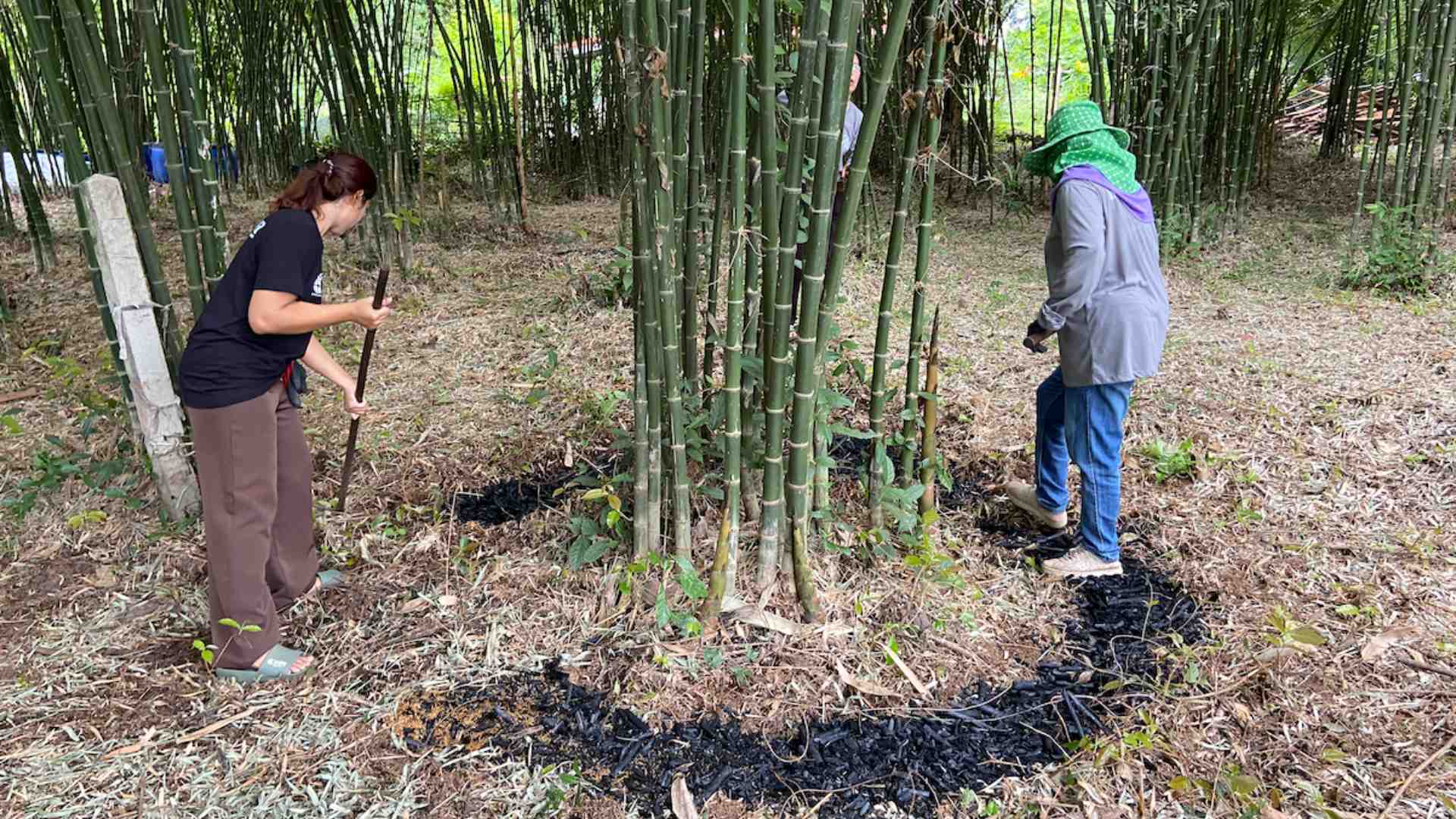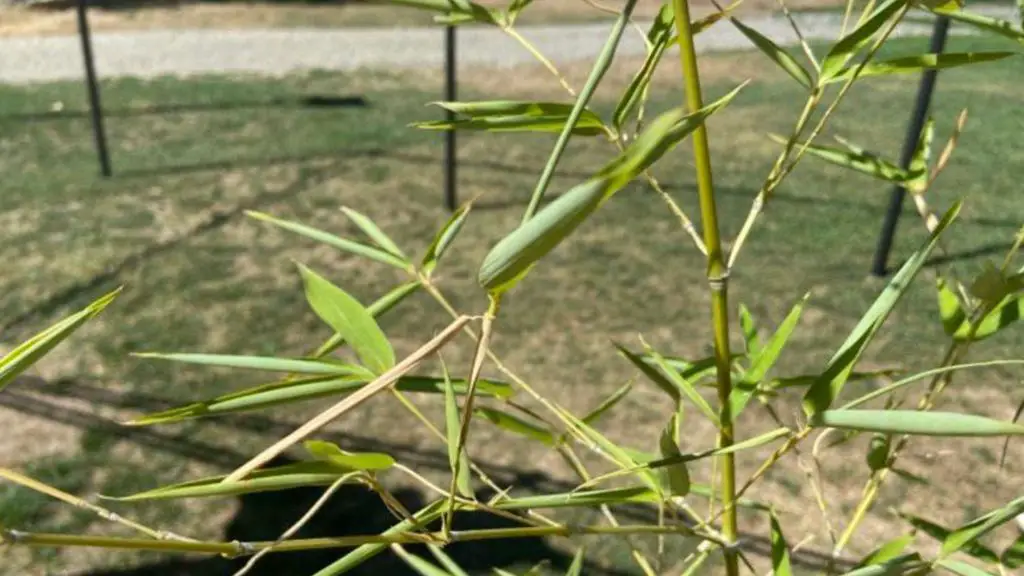It seems like the most common problem gardeners have with bamboo is that it grows too fast. Certain varieties of running bamboo can definitely be aggressive or even invasive. But without proper care and feeding, your bamboo might also languish, lose leaves and fail to grow. Bamboo is actually a hungry plant, so if you want yours to look its best and live up to its highest potential, you’ll need to feed it. Fertilizing your bamboo on a regular schedule is important, but it doesn’t have to be complicated or expensive.
The most popular choices for fertilizing bamboo are natural and organic additives like compost and manure. I’ve seen especially good results from horse manure, chicken manure, and mushroom compost. Some gardeners use chemical fertilizers, particularly those formulated for grasses and lawns. Typically it’s a good idea to feed your bamboo twice a year, in spring and summer. Without sufficient fertilizer and nutrients, a bamboo plant will probably have smaller culms, fewer new shoots, and fewer leaves. It will also lack the vibrant luster that a healthy plant should have.
In the following article, we’ll tell you all you need to know about how, when and why to fertilize your bamboo. For additional tips on caring for your bamboo, you can find plenty more content on our blog. The articles on Growing bamboo and Watering bamboo might be a good place to start.
NOTE: This article first appeared in October 2020, last updated in September 2023.
Is it necessary to fertilize bamboo?
Generally speaking, bamboo is a pretty hungry plant. Sure, it can survive in some pretty adverse conditions, but it you want it to truly thrive, with lots of new shoots and an abundance of lush foliage, you’ll probably have to fertilize it. I’ve seen some bamboo specimens that looked great with little or no fertilizer, but in most cases, a good feeding will make a big difference.
One of the great advantages of bamboo as a natural resource and cash crop is that it doesn’t require the kinds of chemicals and fertilizers used on other crops like cotton or cassava. But that doesn’t mean it will flourish in your garden with just a dash of love and sunshine.
What are the best fertilizers to use for bamboo?
Organic options
Organic fertilizers work great on bamboo, and personally, I prefer to avoid chemical additives when I can, so that’s good news. My top choices for feeding bamboo are horse manure and mushroom compost. Both of these are very rich in nitrogen, and that’s what the bamboo needs. Chicken poop, with more nitrogen and potassium than any other manure, is excellent too if you have any on hand.
I’m also a fan of local ingredients, so living near some horse ranches and a commercial mushroom (shiitake) grower is helpful. It’s ideal if you can just fill the back of a pickup with some horse droppings from your buddy’s ranch. But if you contact a few nurseries and landscapers, these types of fertilizers are not hard to find. And most garden centers sell organic compost by the bag.
Just be careful, when you get fresh compost or manure, that it’s not overly fresh. If it hasn’t had enough time to break down, these substances can be too hot on the plant and its roots.
Compost and manure are easy to spread on the ground, like mulch, around the base of your bamboo grove. A good layer, 2-3 inches thick, should do fine. There’s no need to excavate the garden and bury the soil amendments deep underground. Bamboo loves a good mulching, so this method will serve a dual purpose, nourishing the roots while also insulating them to regulate the temperature and reduce moisture loss. As you water the plants, the organic matter will slowly release the nutrients into the soil, over a period of a few months.

Biochar is a hot topic these days. Farmers have recognized the benefits of adding charcoal or biochar to their soil for centuries. Whether provided by a natural forest fire or human intervention, that additional carbon has been shown to improve plant growth and crop yields.
The incredible porosity of biochar makes it a valuable substrate for retaining moisture in the soil and attracting beneficial microbes. More recently, climate scientists have come to understand that burying biochar in the soil is also an effective way of creating a long-term carbon sink. Turning waste biomass into biochar fixes the carbon into a stable state, whereas otherwise that biomass would breakdown, decompose, and release CO2 and other greenhouse gases into the atmosphere.
Chemical solutions
For those who prefer to use chemicals in their garden, there are a variety of fertilizers on the market that are suitable for bamboo. As a rule of thumb, if it’s good for grass and lawns, it should be good for bamboo (which is a grass).
Look for a product high in nitrogen. Something with an NPK in the neighborhood of 15-5-10 or 18-5-12 should work great. NPK represents the chemical balance of your fertilizer, and organic fertilizers use the same system. It stands for nitrogen, phosphorus, and potassium.
These fertilizers come in different forms, usually in liquid or pellets, which you can apply on the ground. Simply follow the instructions on the packaging, as there is some variation between brands and products.
How often should you feed your bamboo?
For the best results, most gardeners will feed their bamboo twice a year. The first feeding comes at the beginning of spring, to boost the new growth. The second feeding should take place around mid-summer, in the middle of the growing season or the start of the second growth spurt.
In most North American climates, you’ll get two growing seasons, or two waves of shoots. You want to fertilize the plants to coincide with those two periods. In more mild climates like Florida and southern California, where it doesn’t freeze, you can get new shoots coming up in the fall. In these regions, you might want to feed the bamboo a third time, around September, especially if you’re growing in very sandy soil near the beach.
Two or three feedings a year is going to be ideal, if you want lots of strong shoots and a profusion of lush greenery. But even if you just fertilize the bamboo once a year, in the spring, that’s way better than none at all.
What are the signs that my bamboo needs feeding?
Without adequate feeding, your bamboo is not going to look its best. There are a few signs to look for to indicate a nutrient deficiency. Basically, the plant just won’t grow that much. The new shoots that come in spring and summer won’t be very large or numerous. If you’ve had a bamboo plant for two or three years already, and it’s not blowing up with bigger culms and bushy leaves, that’s a good sign that it needs fertilizing.
Other signs of poor health include yellow leaves, brown tips on leaves, and excessive leaf loss. Keep in mind, most bamboos drop their leaves in the spring, as the new growth happens, and not in the fall the way a deciduous tree would.

If you’ve been fertilizing your bamboo and it still shows these symptoms, there’s probably something else going wrong. Some bamboo varieties need more shade, and will not look their best if they’re getting too much direct sunshine. Another common problem is overwatering. Bamboo does not do well in saturated soil, so good drainage is essential.
Conversely, you might also be under-watering. Twice a week is usually enough though, unless it’s been abnormally hot and/or windy. Soggy soil is more commonly the issue. But if your bamboo is in a pot or a container, it could be root-bound. When this happens, the roots can get so impacted that the water can’t penetrate the soil to reach them. In this case, you need to remove the root ball and divide it. This can be a messy chore, but it’s a great way to multiply your quantity of bamboo plants.
Learn more
If you found this article about fertilizing bamboo helpful, please consider sharing it with your friends and subscribing to our blog. Chances are, you’ll also enjoy some of these popular posts:
- Growing Bamboo: A how-to guide
- Directory of bamboo nurseries
- Mulching your bamboo
- 10 Best varieties for your bamboo garden
- Running bamboo: Why must you run?
- Best clumping bamboos: Never run again
- Growing bamboo in the shade
FEATURE PHOTO: Woody bamboo thriving in healthy soil (Unsplash)

























